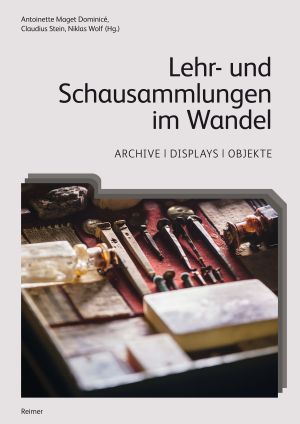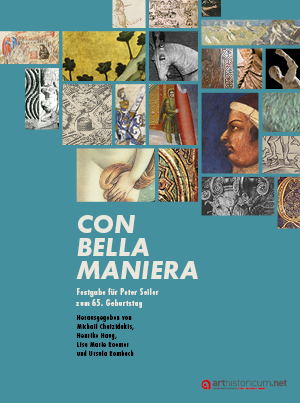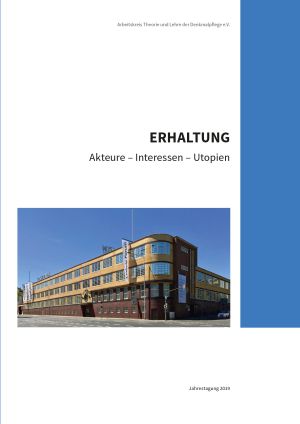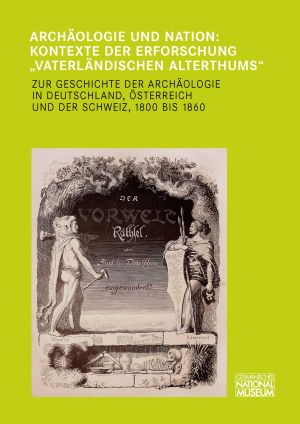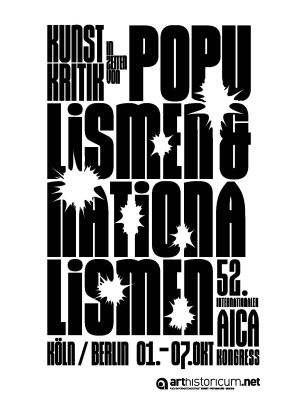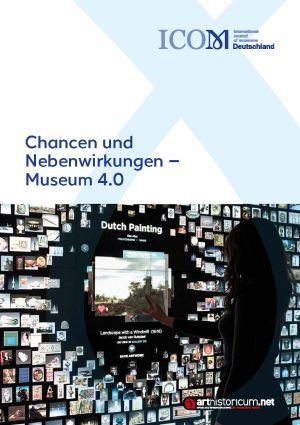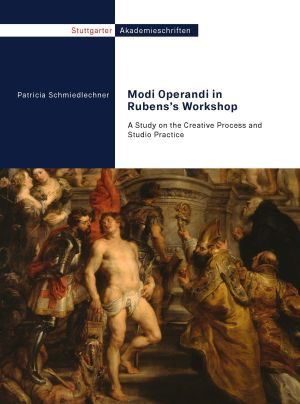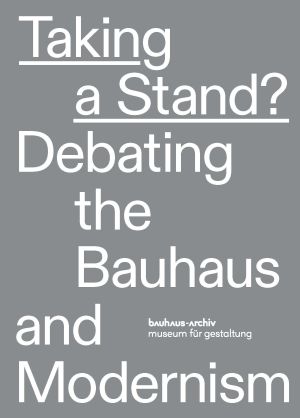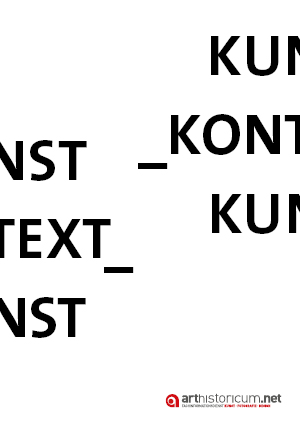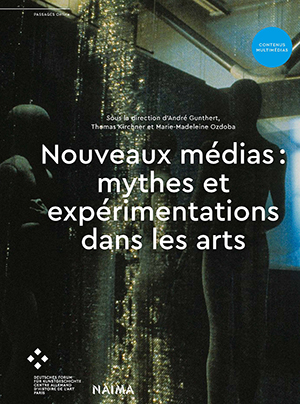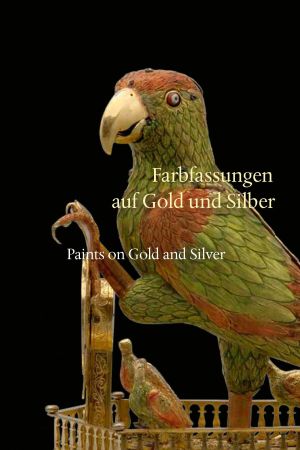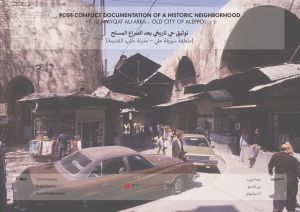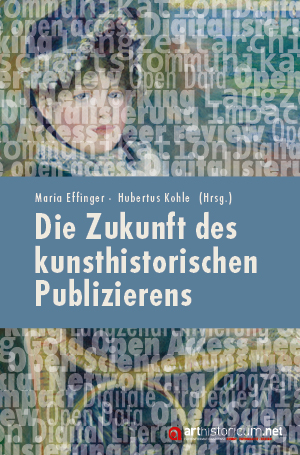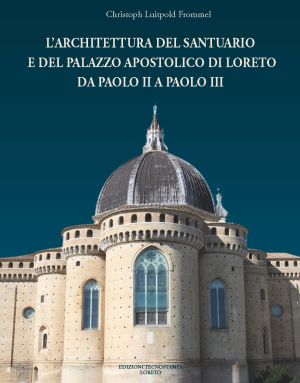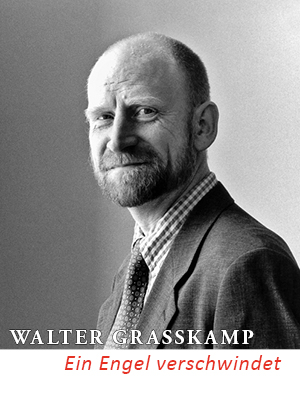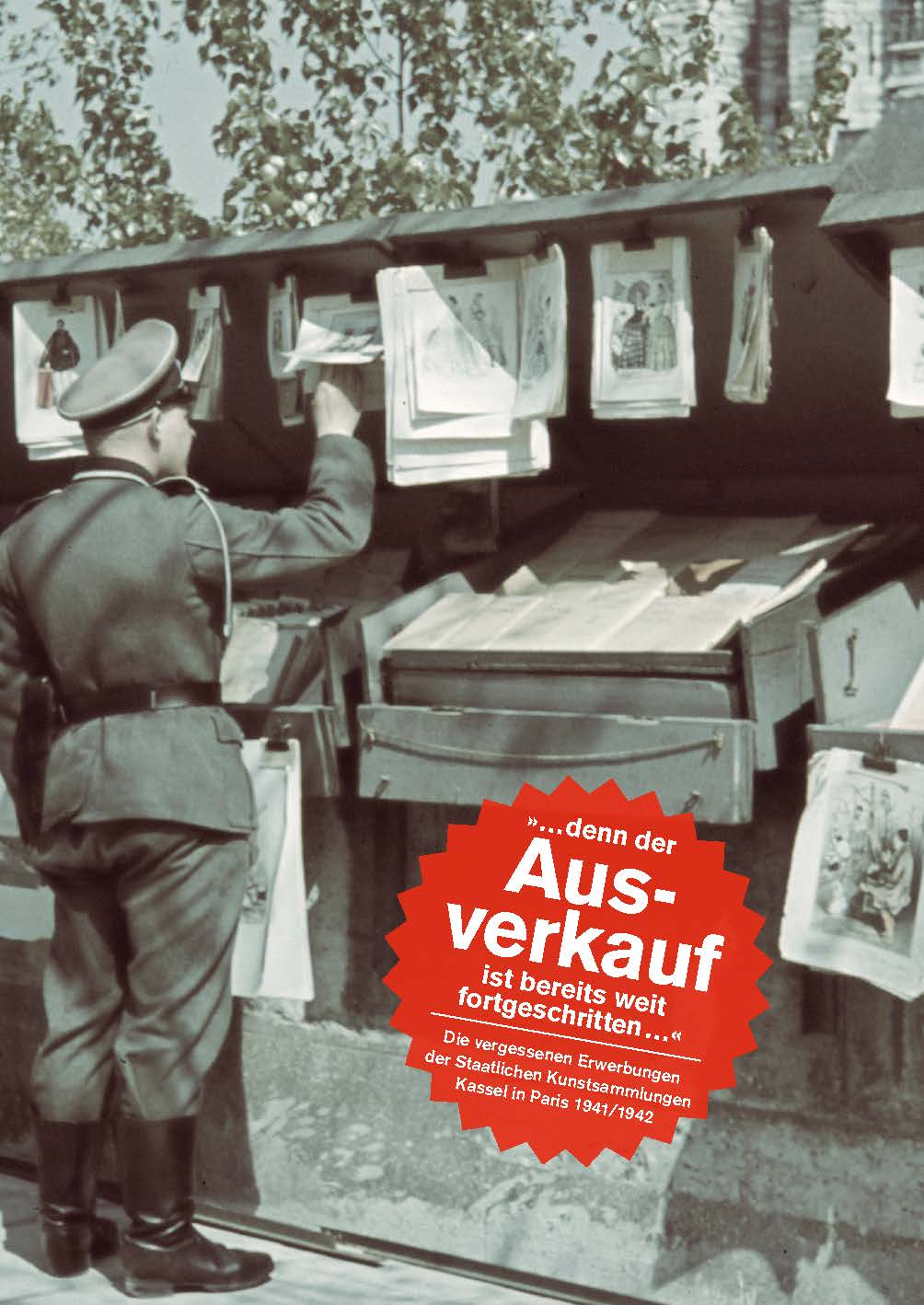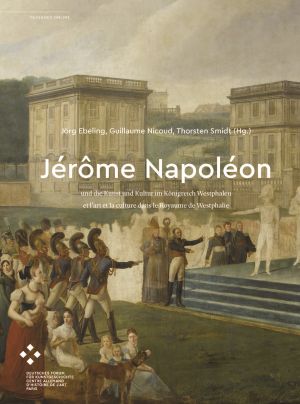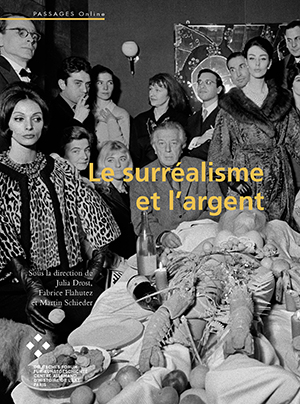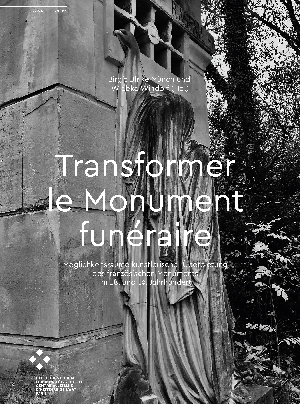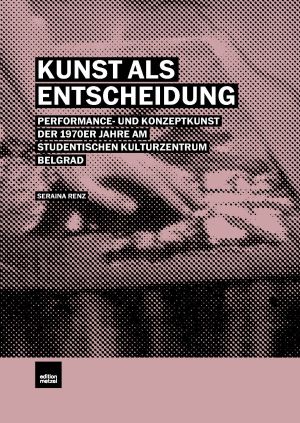Books
Lehr- und Schausammlungen im Wandel: Archive, Displays, Objekte
How can public and university collections be preserved and exhibited in the future? Currently, the presentation of such collections is often determined by changes in those institutions. The history of disciplines and institutions involved is as important as the focus of science on individual objects when it comes to issues of provenance and exhibiting those things.
The authors address the challenges and future of university collections. In addition to reflecting on the integration of objects in research and teaching, questions of the presentation of heterogeneous collections and uncertainties regarding the future of the institution are addressed.
Con bella maniera: Festgabe für Peter Seiler zum 65. Geburtstag
Con bella maniera... under this motto the authors of the present volume pay tribute to the art historian Peter Seiler. Their contributions not only reflect the scholar's cross-genre and cross-epoch research interests and interdisciplinary approach, but also bear witness to friendships that have survived from all phases of his academic vita - from his student days in Heidelberg to his formative time as a fellow at the Bibliotheca Hertziana in Rome and his career at the art history institutes of Freie Universität and Humboldt-Universität zu Berlin as research assistant, associate professor, head of the Census and adjunct professor. His bella maniera transcends the art historical terminus technicus and combines the „time-honoured learnable practices“ of art history with innovative research approaches and the delicate nature of human interaction.
Rollenflexibilität und Demokratisierung in der Kunst: Der Konzeptkünstler, Mail Artist und Networker H. R. Fricker
The Swiss artist Hans Ruedi Fricker, born in 1947, has been practicing mail art since 1981. This form of art takes place in an open network where participants exchange objects and self-designed stamps, postcards, and envelopes by mail. Furthermore, they exhibit, collect and preserve mail art. Even before his mail art activity, Fricker intended to de-hierarchize, decentralize and finally democratize the art market, which he perceived as elitist. He belongs to a new type of artist who reacts to current events in a fresh manner and is with his art committed to personal and social processes.
A documentary about mail art is part of the publication. The documentary will be submitted to festivals and will be published later.
Erhaltung: Akteure – Interessen – Utopien
The will to preserve the architectural cultural heritage can be considered one of the cornerstones of heritage conservation theory and practice. In addition to this seemingly common, overarching goal, however, a closer look reveals a broad spectrum of different objectives and priorities. These are each closely linked to the social contexts and the people involved. For what is understood by preservation and what is to be preserved in a monument is to a large extent related to what is considered to constitute its value - and is thus dependent not only on the constantly changing technical prerequisites, but also on personal and social attributions of value.
Archäologie und Nation: Kontexte der Erforschung „vaterländischen Alterthums“: Zur Geschichte der Archäologie in Deutschland, Österreich und der Schweiz, 1800 bis 1860
During the first half of the 19th century, academic interest in local archaeology flourished significantly. Even at the time, calls for a national antiquarianism (‘vaterländische Altertumskunde’) drew explicitly on a new national consciousness that surged in the wake of the Wars of Liberation. Today, this phenomenon requires careful and critical analysis. How do the era’s ideas of nationhood relate to the rising interest in local antiquities? Which historical, political and social circumstances advanced this 'vaterländischeʼ (patriotic) archaeology? Archaeologists and historians from Germany, Austria, Switzerland and the Czech Republic discuss these questions in their contributions.
The links "Table of Contents -> Contributions", "Contributions <-> Summaries" and "Index of Persons -> contributions" only work in the complete PDF.
Kunstkritik in Zeiten von Populismen und Nationalismen: Akten des 52. internationalen AICA Kongresses, Köln/Berlin 1. bis 7. Oktober 2019
This publication documents the 52nd International Congress of the Art Critics Association (AICA), which met in 2019 in Cologne and Berlin to discuss the topic of Art Criticism in Times of Populism and Nationalism. More than forty speakers and moderators provided a definition of populism, addressed issues of discrimination, censorship in many countries, and the appropriation of artistic strategies in ‘right-wing’ language use. The autonomy and responsibility of art and art criticism were also thematised. The discussions reproduced here in text form reveal the full complexity of the topic.
The documentation is published in two separate German and English volumes.
Art Criticism in Times of Populism and Nationalism: Proceedings of the 52nd International AICA Congress, Cologne/Berlin 1–7 October 2019
This publication documents the 52nd International Congress of the Art Critics Association (AICA), which met in 2019 in Cologne and Berlin to discuss the topic of Art Criticism in Times of Populism and Nationalism. More than forty speakers and moderators provided a definition of populism, addressed issues of discrimination, censorship in many countries, and the appropriation of artistic strategies in ‘right-wing’ language use. The autonomy and responsibility of art and art criticism were also thematised. The discussions reproduced here in text form reveal the full complexity of the topic.
The documentation is published in two separate German and English volumes.
Chancen und Nebenwirkungen – Museum 4.0: Jahrestagung von ICOM Deutschland, 14. bis 16. November 2019 in München. Tagungsband
The challenges of museums in the digital age are manifold, but where to begin in view of the multitude of tasks? The 2019 annual conference of ICOM Germany used interesting case studies – Museum4punkt0, NUMiD, ViSIT (University of Passau), Cadolzburg (Bavarian Palace Administration), Digital Strategy for Museums (State Office for Non-Governmental Museums in Bavaria), and many others – to discuss different perceptions of the field of digitization in cultural establishments, individual fields of action, and difficulties that often arise in museum reality. As diverse as the museums are, the twenty or so examples presented make it clear: If digitization is to be a successful sustainable opening of museums to the digital and thus extend beyond individual digital mediation offers, emphasized Julian Nida-Rümelin in the introduction, it must go hand in hand with a digital mindset and a corresponding work culture. Furthermore, a digital strategy that suits one’s own institution as well as sufficient resources and the support of the museum sponsors are important requirements.
Modi Operandi in Rubens’s Workshop: A Study on the Creative Process and Studio Practice
Peter Paul Rubens’s extensive œuvre comprises more than 1500 paintings, as well as preparatory material such as drawings and oil sketches. As was customary at the time, the master painter employed a multi-person workshop and his staff and pupils were significantly involved in his artistic output. This collaborative working process complicates the issue of attributing Rubens’s work by today’s standards of single-handed execution.
The publication highlights the procedures of the workshop by examining the socio-historical circumstances and written sources, while the preparatory process was assessed based on the case study of the high altarpiece of the Augustinian Church in Antwerp. The drawings and sketches associated with the creation of this painting were understood not only as evidence of creative processes but also as the results of division of labor and Rubens’s teaching practice.
Taking a Stand? Debating the Bauhaus and Modernism
“Taking a Stand? Debating the Bauhaus and Modernism” is the developed and expanded version of a symposium that incorporated a school project. The title asks what is understood by adopting an attitude, both in terms of the Bauhaus as a discursive object and the ways in which it is addressed. The concept of taking a stand spans a broad nexus of ideas for investigating the Bauhaus and Bauhaus historiography and for opening up the Bauhaus to the future. The Bauhaus becomes recognizable as a complex of material culture, ideas, practices, and politics, while its understanding as a transnational and transcultural network of relationships becomes fruitful as a driving force for transcultural exchange. The curated format of this hybrid print and online publication opens up non-linear and multi-perspective approaches via overarching questions and keywords.
To use the full functionality as well as the document internal navigation, please download the complete volume.
Kunst_Kontext_Kunst
The aim of the text collection Kunst_Kontext_Kunst is to sharpen the term, the concept and the operations of the "catchall term" context by examining artistic and theoretical works (theory texts, video installations, a perception model, in-situ installations, site-specific interventions and Institutional Critique), to understand our artistic and theoretical objects of investigation as well as our epistemic framings and, last but not least, ourselves as academics in the context of, among others, institutions, methods and media. In this way, we presuppose ecologising, namely context- or environmental relationalities.
Nouveaux médias: mythes et expérimentations dans les arts
With the editorial participation of Sara Alonso Gómez, François Aubart, Juliette Bessette, Marie-Laure Delaporte, Claus Gunti, Caroline Marié, Julie Martin and Marie Vicet.
https://newmedia.dfk-paris.org/
Research in art history on the relations between the arts and new media interrogates not only the wealth of experimental forms but also issues of resistance to visual hegemony – from the debut of cinema to virtual reality devices, and by way of video art and cybernetic art.
This publication distances itself from the mythology of new media as a symbol of modernity, seeking to grasp these issues through artistic practices. Far from the technological determinism that has contributed to structuring the field, it approaches media and techniques as tools for investigating art and culture. Twenty-four scholarly and artistic contributions offer an extensive mapping of the most recent research, reconfiguring our understanding of museum practices, of the role of technology, and of the artistic object and the experience of audiences.
Related research data on arthistoricum.net@heiDATA
Farbfassungen auf Gold und Silber / Paints on Gold and Silver
Many works of goldsmiths’ art once presented themselves in a surprising range of colors, their appearance dominated by the use of paints. Since these treatments were subject to deterioration over time, the polychromatic surfaces are today often only partially extant and were thus given little attention by scholars. In this volume, experts from several European cultural institutions look at this realm of research in terms of art history, restoration and conservation, and with a scientific perspective, spanning a period from the Middle Ages to the early nineteenth century. Complementing Grünes Gewölbe’s 2018 publication Natürlich bemalt: Farbfassungen auf Goldschmiedearbeiten des 16. bis 18. Jahrhunderts am Dresdner Hof, the first to explore the subject in a comprehensive way, now additional findings are available on this fascinating creative device.
Hollis Frampton: ADSVMVS ABSVMVS, in memory of Hollis William Frampton, Sr., 1913–1980, abest
The publication documents the first European solo presentation of conceptual photography by Hollis Frampton (1936–1984) at UG im Folkwang, Essen, in 2018. The book features reproductions of the eleventh edition of ADSVMVS ABSVMVS, in memory of Hollis William Frampton, Sr., 1913–1980, abest (1982) as well as a re-design of the exhibition brochure and installation views. The texts collected in this volume place ADSVMVS ABSVMVS in the history and theory of art, photography and exhibition making. The exhibition and catalog resulted from a collaboration between Freie Universität Berlin and Folkwang University of the Arts in Essen.
Post-Conflict Documentation of a Historic Neighborhood: (Suwayqat Ali Area – Old City of Aleppo)
Aleppo is one of the oldest, constantly inhabited cities of the world. The old city still bears the remains of the Hellenistic street grid and historic monuments of various periods. The area of the study “Suwayqat Ali” is located to the north of the suq (market area). It is a mixed quarter that contains public and private buildings. The area was selected due to its functional diversity, historic importance and the serious damage it has sustained. The study presents a holistic view on the quarter: an urban analysis and the history and architecture of the most prominent buildings, including the present state. The publication is presented in English and Arabic.
Studien zu einer Kreuzigung im Louvre: Malerei nach Giotto in Unteritalien und Kunst am Anjou-Hof
This book is dedicated to a Neapolitan crucifixion panel from the first half of the fourteenth century, acquired by the Musée du Louvre in 1999. It was the aim of the study to analyse the crucifixion iconographically to determine its origin. In doing so it becomes clear that this representation shows motifs, already known from Central Italy as well as new motifs, that are only allegeable in a local Neapolitan context. This leads to the attribution of the panel to the Neapolitan workshop of Giotto. The dating of the crucifixion to years 1332/1333 results from the debate around the visio beatifica Dei, an important issue at the court of Robert of Anjou at that time, that had a huge impact on the panels composition. The placement of the crucifix-ion in the courtly context is thereby proven.
Bibliographie Grünes Gewölbe 1800 bis 2020
The bibliography seeks to provide a complete list of publications issued since 1800, concerning the history and holdings of the electoral and royal treasury in Dresden (or Grünes Gewölbe), of the Kunstkammer and of the Green Vault museum (Grünes Gewölbe).
Beside inventory catalogues and museum guides, many articles in scientific journals, exhibition catalogues and monographs were published - by the museum’s staff and by academics all over the world. All these works are compiled in this bibliography.
The text is divided into three chronological sections: 1800-1945, 1959-1989 and 1990-2020.
Die Zukunft des kunsthistorischen Publizierens
Scientific publishing is in a state of upheaval, and no one can avoid the universal game changer that is digital. It is highly doubtful whether the printed book will be the standard model in this field in the future. Instead, the internet offers itself as an extremely flexible medium, which clearly offers both added value and a common method of reception. The many possibilities that digital publishing opens-up are examined in this volume, in a series of 14 essays from an art historical perspective.
The proceedings are published not only as a PDF e-book, HTML version and print-on-demand edition, but also as an XML version enriched with standards data tagging.
L' architettura del santuario e del palazzo apostolico di Loreto da Paolo II a Paolo III
Located on the eastern border of the Papal States near Ancona, the Sanctuary of Loreto cannot compete in size and decoration with Florence Cathedral or St. Peter's Basilica in Rome, but it reflects, more clearly than any other monumental church building of the period, eighty years of development in Renaissance architecture.
The construction of the sanctuary and surrounding buildings is owed to Pope Paul II Barbo, who, after a miraculous recovery, promised Our Lady that he would build her a magnificent shrine. From the beginning of construction in 1468 and throughout the following pontificates until Paul III, eminent architects, sculptors and painters such as Francesco dal Borgo, Giuliano da Maiano, Baccio Pontelli, Donato Bramante, Andrea Sansovino, and Antonio da Sangallo the Younger were involved in the execution of this work, which was never completely finished.
Based on decades of study, Christoph Luitpold Frommel has comprehensively presented the history of this monument for the first time in this monograph, which was funded by the Fondazione Cassa di Risparmio di Loreto and published in Italian in 2018. The volume, which also includes extensive source indexes compiled by Marco Calafati, is now published online on ART-Books.
Walter Grasskamp. Ein Engel verschwindet: Künstlerportraits aus vierzig Jahren
This volume commemorates the awarding of the AICA Prize for a Distinguished Contribution to Art Criticism to Walter Grasskamp.
Under the poetic and mysterious title The Angel Vanishes, Grasskamp has collected nineteen monographic portraits of artists – written between 1979 and 2019 – which appear here in chronological order. The anthology focuses on the work of artists with whom he has been associated over a longer period of time and has written about on several occasions, including Hans Haacke, Sigmar Polke, and Gerhard Richter. In addition to these are artists such as Markus Raetz, Aldo Walker, Axel Kasseböhmer, and Ben Willikens, who have drawn attention to themselves with their idiosyncratic works. This is followed by Grasskamp’s detailed reflections on the ‘art market hangover’, in which he discusses the changing role of art criticism.
» …denn der Ausverkauf ist bereits weit fortgeschritten...«: Die vergessenen Erwerbungen der Staatlichen Kunstsammlungen Kassel in Paris 1941/1942
Mit der Besetzung Frankreichs im Sommer 1940 setzte, dank Wegfall vermögender Käufer und eines von den Deutschen festgelegten günstigen Wechselkurses, ein Run der Deutschen auf den Pariser Kunstmarkt ein. Zahlreiche Kunstsammler und auch Mitarbeiter deutscher Museen reisten nach Paris und verfielen in einen Kaufrausch. Hans Möbius, Archäologe und stellvertretender Direktor der Staatlichen Kunstsammlungen Kassel, der als Mitarbeiter des Kunstschutzes 1941 nach Paris beordert wurde, nutzte ebenfalls die günstige Gelegenheit.
Der Band, der in Zusammenhang mit der gleichnamigen Ausstellung in Kassel entstanden ist, widmet sich dem Thema und stellt anhand von erhaltenen Dokumenten und Fotos die Umstände der Erwerbungen vor sowie die Vorgänge der Rückgabe an Frankreich nach dem Kriegsende. Im Zentrum stehen dabei die in Kassel verbliebenen Kunstwerke und Bücher. Warum wurden diese nicht zurückgegeben? Was wissen wir über deren Erwerb? Und wie gehen wir heute mit ihnen um?
Vieles ist im Zusammenhang der Pariser Erwerbungen noch offen, was im internationalen Netzwerk der Provenienzforschung zukünftig erarbeitet werden wird.
Jérôme Napoléon - und die Kunst und Kultur im Königreich Westphalen / et l’art et la culture dans le Royaume de Westphalie: Kolloquiumsakten und Archive / Colloque et recueil d’archives
Malgré ses six années d’existence, le royaume de Westphalie dirigé par le plus jeune des Napoléonides Jérôme Bonaparte (1784-1860), surnommé le « König Lustik », apparaît comme un exemple paradigmatique des transferts artistiques et culturels entre la France et l’Allemagne. Les textes réunis dans le présent volume explorent les modèles et influences françaises de même que les tendances locales à l’assimilation ou à la modification de la vie culturelle multiforme de la capitale westphalienne et de ses provinces. Étayée par une sélection d'archives conservée en Allemagne et en France traitant de la thématique de « l'art et de la culture sous le roi Jérôme Napoléon », cette étude aspire à fournir une base essentielle pour l'exploration précise de la relation entre centre et périphérie dans l'Europe napoléonienne.
Le surréalisme et l’argent
Animé par l’augmentation des flux migratoires au cours du 20e siècle, le surréalisme s’est développé en un mouvement artistique unique – et à bien des égards « pionnier » – dont l'influence fut mondiale. Cette anthologie analyse pour la première fois les rôles qu’ont joués les artistes, les marchands d’art, les collectionneurs et les musées au sein des réseaux fondateurs du surréalisme en Europe, hissant ce dernier au rang des courants avant-gardistes du 20e siècle. Cet ouvrage présente 20 essais sur les différents acteurs du marché de l’art, du surréalisme et sur leurs interactions dans l’Europe de 1924 à 1969.
Transformer le Monument funéraire: Möglichkeitsräume künstlerischer Überbietung des französischen Monuments im 18. und 19. Jahrhundert
The thoroughly original French sculpture of the 18th and 19th centuries has so far too often been discussed only in the context of an illustrated history of mentality, thereby failing to recognize its independence. Certainly, the weighty assessment of Erwin Panofsky, who attested to a lack of innovative spirit in funerary sculpture after Bernini, also contributed to this. This volume seeks to explore the “spaces of possibilities” that contribute to a deeper understanding of memorial culture and its transformations, and argues to overcome the rigid division into pre- and post-revolutionary art. In addition to the spaces of the monument, which were subject of a transition around 1800 due to the change of the burial site, the contributions perspective the different public spheres of these transformations, they ask about the innovative power of the “enlightened” (grave) monument and its new and resilient functions.
La sculpture française des XVIIIe et XIXe siècles, qui était en tout cas originale, n’a jusqu’à présent trop souvent été abordée que dans le cadre d’une histoire illustrée des mentalités, ne reconnaissant ainsi pas son indépendance. Certes, l’évaluation pesante d'Erwin Panofsky, qui avait attesté d’un manque d’esprit novateur dans la sculpture funéraire après Bernin, y a également contribué. Le présent volume se propose au contraire d’explorer les « espaces de possibles » permettant une meilleure compréhension de la culture du monument funéraire et de ses transformations ; il plaide ce faisant pour un dépassement de la stricte démarcation entre art pré- et postrévolutionnaire. Outre les espaces du monument, métamorphosés sous l’effet du changement de lieu des sépultures au tournant du XIXe siècle, les articles ici réunis interrogent les différentes sphères publiques de ces mutations, la puissance d’innovation du monument (funéraire) « éclairé », hérité des Lumières ou encore les nouvelles fonctions de résilience qui lui sont attribuées.
Kunst als Entscheidung: Performance- und Konzeptkunst der 1970er Jahre
The 1970s were a heyday of performance and conceptual art in Yugoslavia. Among the most important places of art production were the self-managed Student Cultural Centers founded in the wake of the 68 riots, especially the one in the capital Belgrade. Seraina Renz examines selected works and exhibitions from this hitherto little explored place and section of recent European art history. For the first time, contemporary historical testimonies and theoretical debates are analyzed and the works are placed in an international art historical context.



